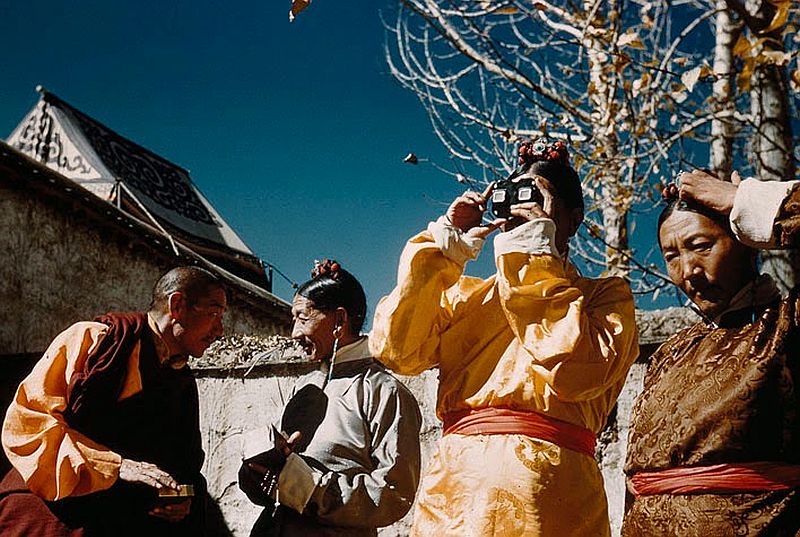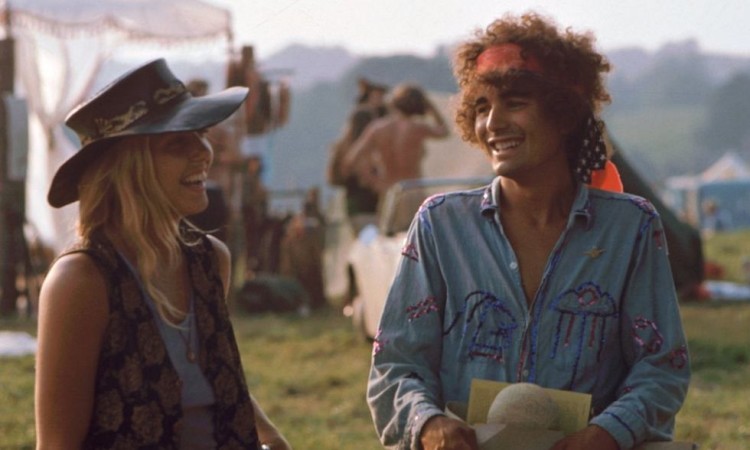Haggard and half-starved, the author Heinrich Harrer and a companion, Peter Aufschnaiter, arrived in Tibet in early 1946 after a hazardous 21-month flight from a wartime internment camp in India. Officials ordered them to leave, then relented. Extraordinary experiences befell Mr. Harrer during seven years in the veiled land beyond the Himalayas. Before China invaded Tibet, he became a friend and tutor of the Dalai Lama, its spiritual and temporal ruler.

In sublime reverence, the Dalai Lama cradles his faith’s holiest relic. When this young man was two years old, mysterious signs revealed him as the incarnation of Tibet’s patron god, Chanrezi, and the previous 13 Dalai Lamas. Here at Dungkhar Monastery he receives a gold-encased bone which Tibetans believe to be that of Gautama Buddha, who founded the religion on which Lamaism is based.

In summer the Dalai Lama quits his winter quarters at the Potala and journeys to the Norbu Lingka (Jewel Park), two miles away. Here, at the ruler’s return in autumn, townspeople throng the poplar-lined lane to watch the royal cavalcade.

Cheeks ballooning, monks force sirenlike blasts from silver trumpets as they clear the way for their king.

The Dalai Lama’s mother and sister defy convention with Western glasses. Dekyi Tshering (right), once a humble farm wife, rose to an awesome position as Tibet’s “Great Mother” when her son became Dalai Lama in 1940. She and her daughter wear brocade hats fringed with silk. Eyeglasses were taboo in the god-king’s presence.

Top Tibetan officials marvel at a souvenir from America. A finance secretary peers through a slide viewer, memento of a Tibetan trade delegation’s mission to the United States in 1948.

Clouds of dust and incense veil the Dalai Lama’s flight to safety. When China’s troops entered Tibet in 1950, the Living Buddha fled to the Sikkim border. Here in a sedan chair, he rides between rows of stones designed to ward off demons.

Monks and nuns since birth, Red Hat children await their god. The Dalai Lama fled Lhasa in secret, but the news swept before him. At Jang Monastery, a day’s journey from the holy city, thousands of weeping monks threw themselves into the road before their ruler, begging him not to leave. Here youngsters wave banners, while their elders pray to the sound of drum and cymbal. Unlike the celibate Yellow Hat order, monks of the Red Hat sect may marry; children follow their parents into religious seclusion.

Monks and nobles prepare for the arrival of the Dalai Lama at Dungkhar Monastery, in Chumbi. Each place the god-king slept on his trek immediately became a consecrated chapel, where no mortal man may ever again dwell.
Photos by Heinrich Harrer, via National Geographic Magazine






